The PLV report is about contextualizing player performance; i.e., understanding who is doing what well versus where they might be struggling. For example, PLV can help us gauge how well a pitcher is expected to perform by evaluating inputs like location, movement, speed, etc.
This week we will continue looking at some early-season pitching standouts now that we’ve got the requisite sample size of about 500 pitches for quite a few arms. You’ll notice plvLocation+ scores on pitch-type cards which grade locations based on where the pitch ends inside the hitter’s strike zone (100 is average).
Note: Data is current through Monday, May 13th.
653 Pitches| 43 IP
Ober tossed a gem this past Sunday, holding the Jays to just a single baserunner across six and a third innings while striking out ten. The effort lowered his ERA to 3.77 with a 0.88 WHIP. In case you were wondering, PLV is loving what Ober is doing. His 5.57 PLV leads all pitchers with at least 500 pitches thrown.
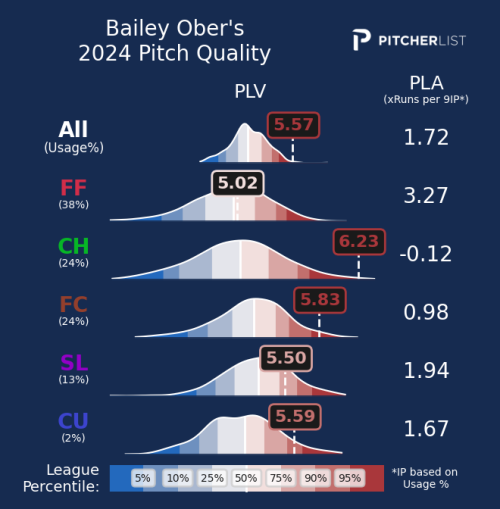
Ober’s heater isn’t all that hard and doesn’t have the lethal combo of extraordinary height-adjusted vertical approach angle and induced vertical break that makes Shōta Imanaga tick. And it’s easily Ober’s weakest pitch by PLV. However, his remarkable extension helps it play well enough upstairs in the zone as a complementary part of his arsenal. He also commands his heater well (103 plvLOC+).
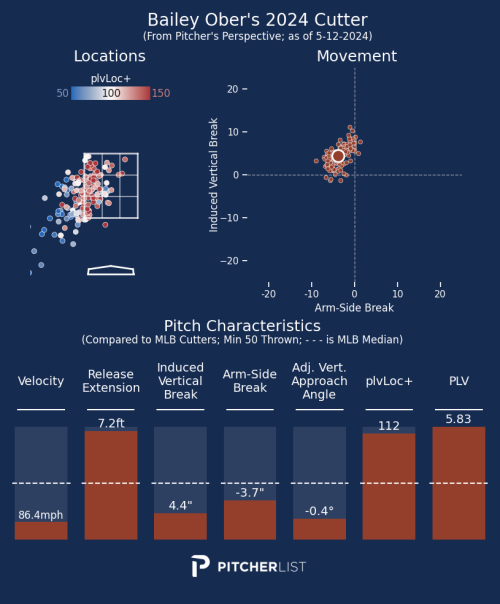
His cutter (above) has been brilliant with a 112 plvLoc+. Seriously, that glove-side command is a work of art. Another way to admire its brilliance is its microscopic 0.6% mistake rate.
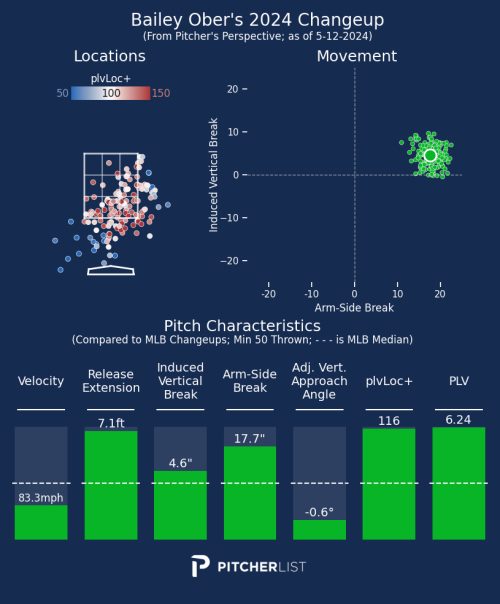
Ober’s changeup (above) has been even better. His remarkable arm-side command of the changeup forms a dynamic tandem with his cutter, creating uncomfortable at-bats for the opposition. Like his cutter, his change’s plvLoc+ is superb at 116.
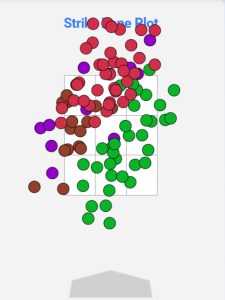
It all came together perfectly during his aforementioned start against the Jays. Feast your eyes on that pitch plot. Picasso could not have done it better.
757 Pitches| 53 IP
Eflin had a ho-hum start his last time out, earning the win while allowing three earned runs over five innings against the Red Sox. He also struck out just two batters. A 3.91 ERA and 1.13 WHIP is nothing to sneeze at. Still, it feels as if he’s surviving instead of thriving.
However, his PLV grades are tremendous and compare well to last year.
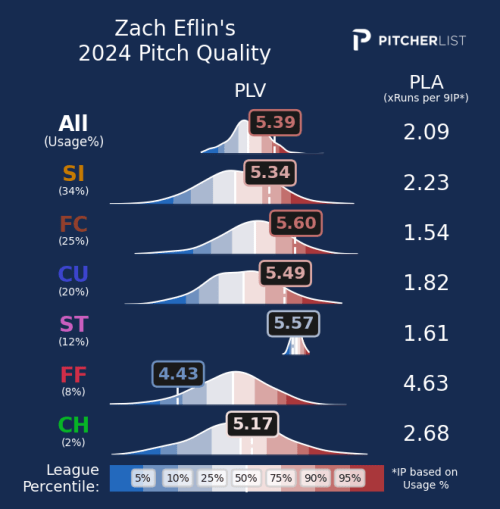
His sinker’s 5.33 PLV is a big improvement from last year’s 4.94 PLV. That’s interesting because you don’t typically see many sinkers pop that well on PLV. It’s held opposing bats to a .287 xwoBACON, compared to .320 last year. Eflin has also demonstrated good command/control of the sinker with a 107 plvLocation+.
Eflin’s curveball’s Swstr% is down from 19% to 15.5%. That’s at least one reason his K rate is down to 18.4%. Still, his curveball rates well thanks to his exceptional command (111 pLV Loc+).
Last year’s 26.5% K rate was probably an aberration, but the overall quality of his pitch locations leads me to think he’s got some more strikeouts in the bag. Otherwise, Eflin should continue to provide strong ratios.
705 Pitches| 44 IP
Let’s take a quick look at another pitcher whose name begins with Z. Gallen has a sparkling 2.86 ERA and 1.11 WHIP through eight starts. However, his PLV is down relative to last year.

The bump down is mostly because of his fastball. It’s lost about an mph and he’s not locating it as well, with a below average pLV Loc+ of 99. Sure enough, it’s ceded a .447 xwoBACON as opposed to a .373 last year. Its ICR (Ideal Contact Rate) is up from 44.3% to 54%. Its SwStr% has also dropped from 8.9% to 5.2%. You get the point. The fastball is down across the board.
Gallen’s curve and change are still in good shape, so I don’t think the bottom is about to drop out. However, the dropoff in his fastball is big enough that I’d be at least a little interested in selling him right now.
752 Pitches| 52.1 IP
Houck has allowed seven earned runs while striking out nine over his last two starts (13 IP) against the Twins and Nats. The recent forgettable results might afford a buying opportunity for what looks like a legit breakout. Houck’s splitter has improved, giving him a secondary pitch. However, his bread-and-butter slider has jumped off the page from a pedestrian 5.04 PLV to an off-the-charts 5.69. The growth in glove-side break is impossible to ignore.
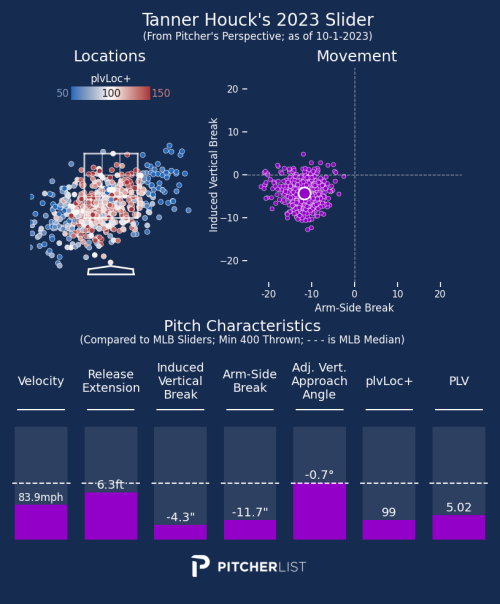
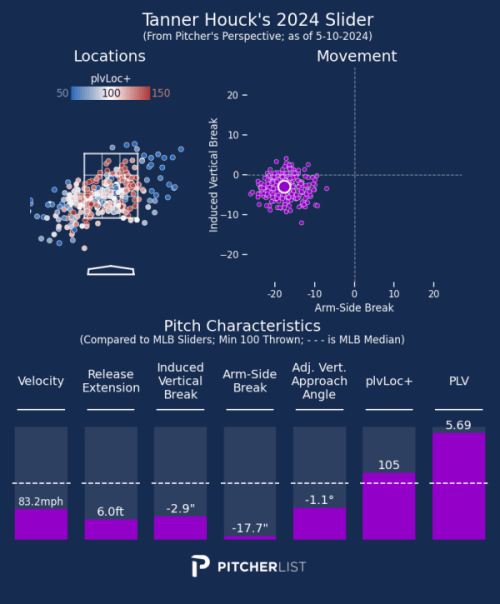
737 Pitches| 43 IP
Patrick Connors recently detailed Rodón’s road back after last year’s disaster. Be sure to check it out if you missed it. To keep it short, PLV is a fan of what Rodón has done thus far. Having used him in a Nastiest Pitches article recently, I can say that at the very least his slider has passed the eye test.
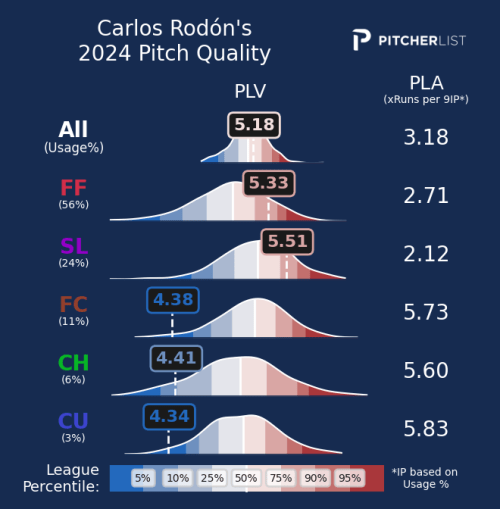
His slider’s PLV of 5.55 compares well to what he did during his 2022 with the Giants (5.31 PLV) and likewise with his heater (5.30 in 2022 vs. 5.33 this year). The new cutter on the other hand, yeah, let’s ditch that.
632 Pitches| 38.1 IP
If you were like me, you were a little interested in the Big Maple potentially rediscovering himself with the Dodgers. Well, hey, he’s 5-0 with a 2.58 ERA through seven starts. That’s good, right? C’mon now, you know better. That 1.41 WHIP is a dead giveaway. Having more walks than strikeouts is a one-way ticket to you-know-where. Sure enough, we shouldn’t expect this to last.
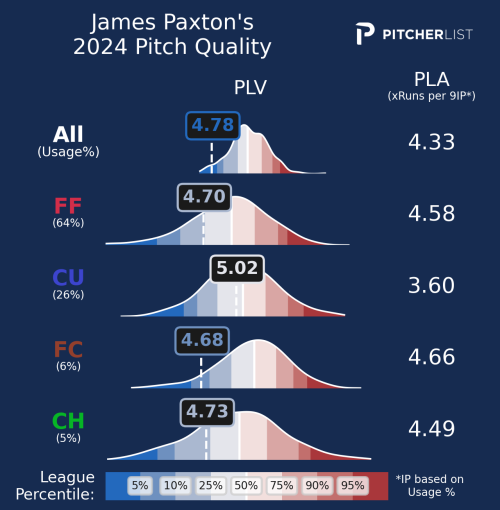
670 Pitches| 47.0 IP
There’s not much more to say about this man. Jones has a nasty slider, don’t get me wrong. But it all starts with the heater. It looks a lot like Spencer Strider’s, doesn’t it? That is to say, a heat-seeking missile with good IVB and an excellent height-adjusted vertical approach angle.
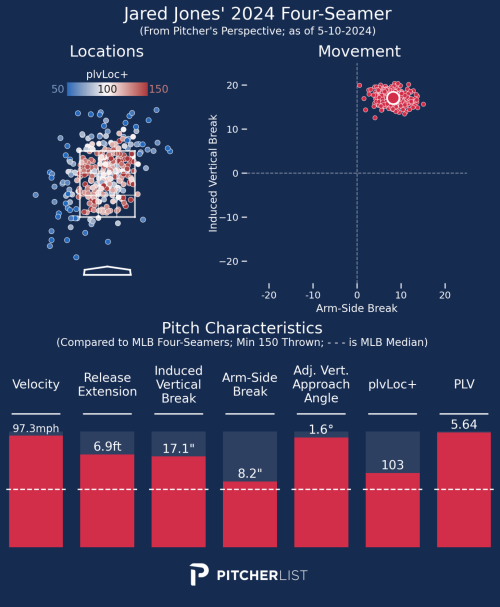
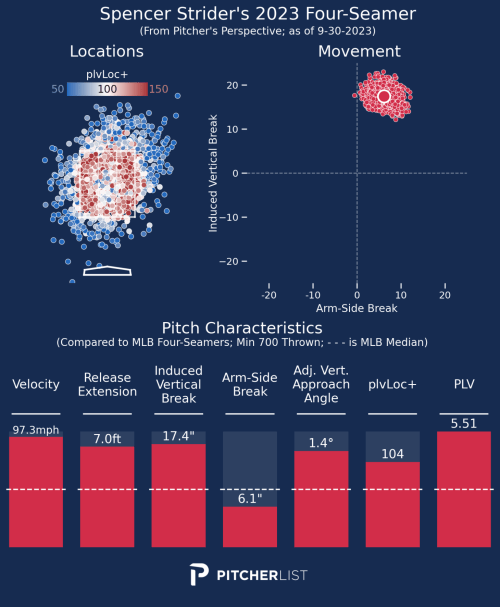
Garret Crochet
773 Pitches| 46.2 IP
The White Sox are, well, a baseball team at least. But, hey, they might have a budding star in Crochet, who has a 5.31 PLV through his first nine starts.
Crochet’s fastball (5.21 PLV) grades well mostly because of its high octane velocity of 96.7 mph paired with his excellent release extension (7.1 ft); its IVB and HAVAA are average-ish. So far, it’s returning an impressive 13.5% SwStr rate.
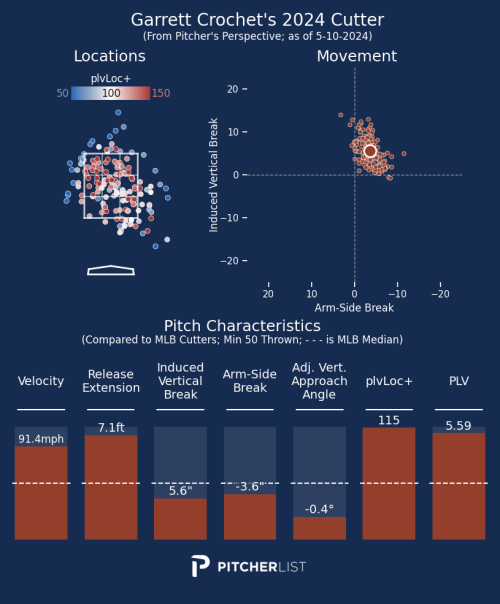
His cutter (above) rates extraordinarily well thanks to his exceptional command (115 PlvLoc+). Crochet’s slider features exceptional glove side break (-15.3″) and is a big-time bat-misser with a 17.2% SwStr rate. However, his erratic command/control of the slider is leading to quite a few non-competitive locations (PlvLoc+ of 99) and has dragged its score down a little.
751 Pitches| 45 IP
Why not? Let’s end with another White Sox arm. It’s easy to forget that Erick Fedde was once a top pitching prospect for the Nationals after posting a 5.41 ERA and 1.52 WHIP from 2017-2022 (454.1 IP). However, he churned out a glorious 2.00 ERA and 0.95 WHIP across 180.1 IP in the KBO last season, and has looked like a new pitcher this year.
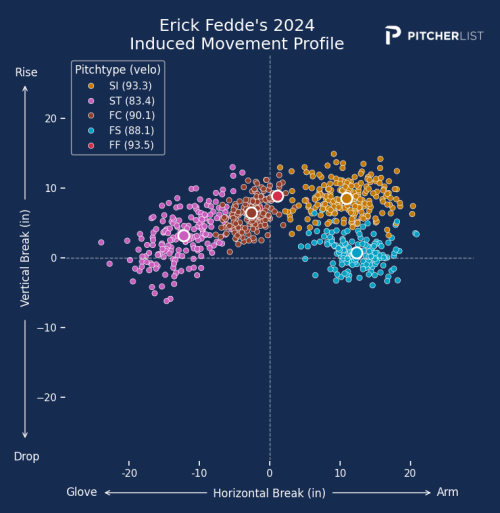
Fedde has an eclectic arsenal featuring a sinker, cutter, split, and a sweeper. The sinker doesn’t grade well (4.84 PLV). However, we can forgive him since PLV is a little harsh when grading sinkers. At the very least, his sinker locations have been above average (103 PlvLoc+).
The rest of his arsenal is promising. His sweeper has demonstrated excellent movement (-12.2″ horizontal break) with above-average location (107 PlvLoc+). His cutter (5.42 PLV) also grades well thanks to above-average movement and good locations (111 PlvLoc+). His splitter (5.48 PLV) has also shown the combo of above-average movement and location that we like to see.

